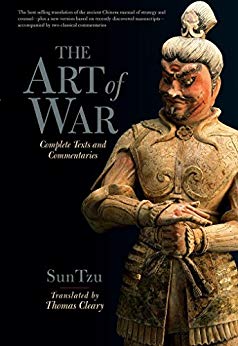

This article is an excerpt from the Shortform summary of "The Art of War" by Sun Tzu. Shortform has the world's best summaries of books you should be reading.
Like this article? Sign up for a free trial here .
In The Art of War, Sun Tzu says, “To know your enemy, you must become your enemy.” What does Tzu mean by that? How do you become your enemy?
We’ll cover 17 strategies for reading your enemy so well that you practically become your enemy. Learn what signs to look for.
To Know Your Enemy, You Must Become Your Enemy
Sun Tzu says, “To know your enemy, you must become your enemy,” but how do you become your enemy? You need to put yourself in the place of your enemy so you can predict his actions.
The goal of any conflict is to control your opponent and overcome them. Controlling their beliefs about your abilities helps you understand their assumptions and plan a strategy accordingly. Only in knowing both your strengths and weaknesses, as well as those of the enemy, can you begin to form a strategic plan. When you understand these traits, you will be able to assess the likelihood of victory in any circumstance. If victory is not certain, you should not engage in conflict. To know your enemy, you must become your enemy.
Reading the Enemy
To become your enemy, you need to know your enemy’s situation. Look out for signs of the enemy’s behavior, interpret them to understand the enemy’s weakness, and react accordingly. This is why to know your enemy, you must become your enemy.
Signs of Fear
- If you see that the enemy has an opportunity to gain advantage but they do not react, they are weary.
- If you hear enemy calls in the night, they are communicating fear. Calling out in the night is a way of connecting with each other for security.
Signs of Exhaustion, Thirst, or Hunger
- If the negotiator is irritable, it means they are exhausted.
- If the enemy requires fortification to stand upright, they are weak and hungry.
- If enemy troops are sent to fetch water for the group and those sent pause to drink first, their entire group is thirsty.
- If the enemy hands out numerous punishments, they are trying to motivate tired troops or are reacting to worn-out troops who are not able to follow commands.
Signs of Enemy Advantage
- Be mindful of your opponent’s positioning. If they leave from a strong position and move to another, there must be some advantage to them doing so.
- If the enemy orchestrates a mass of forces, expect their reinforcements to follow shortly.
- If the enemy depletes their food supplies and abandons essential cooking tools, they are at the end of their rope. The troops now have nothing to lose and will fight to the death.
Signs of Imminent Retreat
- If an enemy negotiator shows aggression and strength, don’t react. They may be trying to intimidate you because they aim to retreat.
- If the enemy hands out numerous rewards to their troops, they are trying to distract them from a loss of momentum.
Signs of Poor Leadership
- If the enemy’s troops are discombobulated or angsty, their leader is not considered competent.
- If the enemy’s signals are all over the place, they lack unity and organization.
- If enemy troops are seen cavorting among themselves and fall behind in their duties, they are becoming disloyal to their leader.
Signs of Manipulation
- If an enemy negotiator comes speaking of peace but carries no treaty, be wary. The enemy may be stalling to manage some issue with their troops or distract you from an ensuing attack.
- If the enemy divides its power and sends half to attack while the other half retreats, they are trying to manipulate you to chase them.
- If the enemy becomes aggressive but does not attack, be ready for an ambush. They are trying to distract you.
If you read the signs, you can put yourself in your enemy’s shoes: To know your enemy, you must become your enemy.
———End of Preview———

Like what you just read? Read the rest of the world's best summary of "The Art of War" at Shortform . Learn the book's critical concepts in 20 minutes or less .
Here's what you'll find in our full The Art of War summary :
- How to mislead your enemies to win the war
- Classic examples from Chinese history to illustrate Sun Tzu's strategies
- How to use spies to gather information and defeat your opponents






